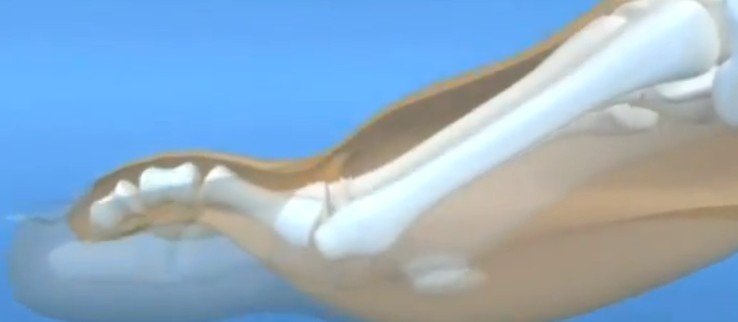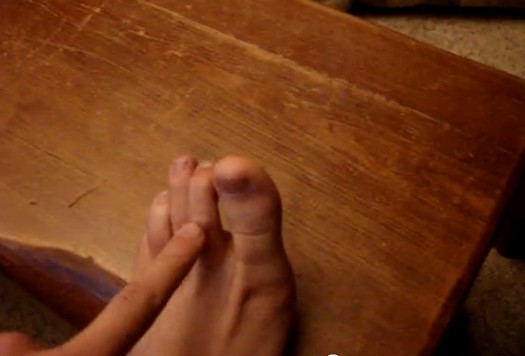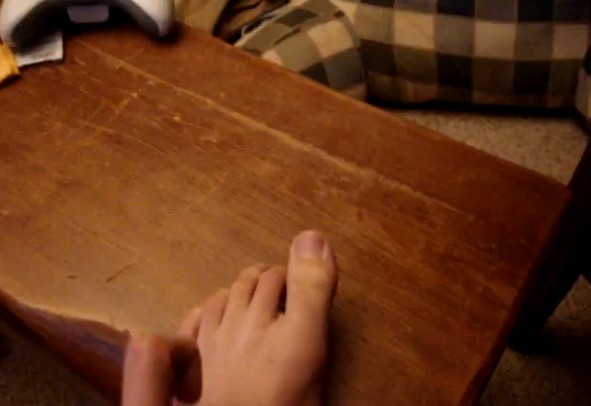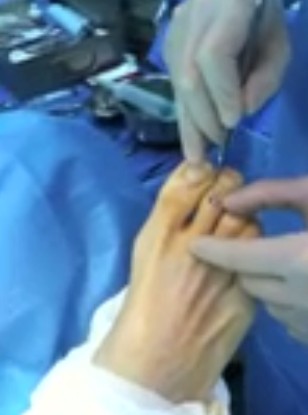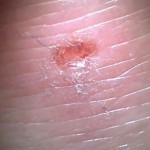Hammer toe is also sometimes referred to as contracted toe. This is a condition wherein your toe or technically proximal interphalangeal joint of your 2nd, 3rd and 4th toe becomes bent. This bent is often permanent and resembles a hammer which is why it is called as hammer toe. This condition may also be mistaken with Mallet toe which is a similar deformity but associated with Distal interphalangeal joint. If you have a bent toe then chances are that the condition may be either a Hammer toe or Mallet toe. Since men wear broader shoe they are less prone to experience pain as compared with women. People who have diabetes of improper blood circulation may face more difficulties than a normal person with the deformity.
There are basically two kinds of hammer toe namely Flexible hammer toe and Rigid hammer toe. Despite of the bent if the joint of the toe allow movement then it is flexible hammer toe. This is better as the condition is less severe and earlier stage of the disorder. In such a case the affected individual has several options for treatment. In case of rigid hammer toe the tendons of the toe becomes rigid and movement is not possible. In such a case the patient often has to undergo surgery.
Hammer Toe causes
Hammer is primarily caused when any toe muscles go abnormal. To your information, each toe has muscles that work in pairs and imbalance of such muscles can exert pressure on the tendons of the cause the joint to become bent. This bend is often in hammer shape which derives the condition its name. There are several factors that may cause the anomalies associated with the muscles. Genes play a role in causing the condition. This inherited tendency can cause the foot to become unstable and both flat foot and high-arched foot is prone to the deformity. In some people even arthritis can cause such a significant bent. However, the main cause of condition is highly recorded is improper fitting shoes. Tight shoes often exert pressure and cause anomalies associated with muscles of the toe which causes hammer toe. Diabetes is also said to be a factor that may cause this condition. This is because diabetes causes damages to the nerve of the toe which is why the condition may occur.
Hammer Toe symptoms
The most obvious symptom of hammer toe is significant bent of the affected toe. Apart from this there are also some other symptoms that may be noticed along with the bent. These are as follows:
- The person may experience ache on the bents upper edge while trying to wear a shoe
- Corns may also form on the top portion of the bent
- Sometimes the proximal interphalangeal joint may become red
- The bent joint may also become swollen
- Experiencing ache on the foots ball right below the deformed toe
- Inflammation and burning sensation may also accompany the condition
- In serious situations even sores may be seen on the affected toe
In order to certainly determine whether you are suffering from hammer toe you should meet your doctor. Your doctor will run physical examination in the clinic itself. He may suggest tests and diagnosis to confirm the prevalence of the deformity. In usual cases mere an X-ray will help the doctor to determine the exact cause of the condition.
Treatment for hammer toe
Your doctor will evaluate the affected toe. If the condition is severe than surgery is often recommended and is perhaps the only option. In less severe or mild cases doctors often recommend specific exercises and medicine to correct the problem. Surgical procedure is often performed after administering the patient with anesthesia. There are several kinds of surgical procedures which can be used to treat the condition. Soft tissue procedure is often suggested for people below 30 years of age who have limited toe deformity. This is invasive treatment which releases tendons.
Bone procedure is associated with the bone. There are two common procedures which include joint fusion and arthroplasty of joint. The severity of the deformity is a decisive factor for determining suitable bone associated surgery for the condition. The time of procedure depends on the type of surgery as well as the number of corrections required. Usually anesthesia does not allow pain during procedure after procedure the pain can be managed with pain killer medicines.
After the procedure you need to keep your feet on an elevated level than your body at least for a couple of days. You may have to significantly restrict walking or even standing. It is better to completely stay off foot for few days unless necessary. Ask your doctor what kind of medical aids you may need such as crutches, open toe shoe with wooden sole etc. Also ask your expert whether it is safe to take shower or soak in water. After the procedure the rectified toe may seem slightly longer than before. However, the toe may not function as a normal toe, this means it may not move as a normal toe. Swelling and redness experienced after the surgery may last for months; hence, you may have to go for new open toe shoes.
Additional measures to consider
- You should wear appropriate fitting shoe but not at all tight
- You should also support the bones of the toe with padding to relieve pain
- Medicine that decrease inflammation can be used to alleviate pain
- Acute pain can be handled by administering cortisone injection
- Consult a podiatrist and see if he can make inserts for your toe to wear within the shoe
- Splint your toe at early stage to help the alleviation become proper and fast
Prevention of hammer toe
Hammer toe is daunting condition wherein excruciating pain may be experienced. The condition can be prevented by following some helpful measures. The focus remains on taking care of your foot. You should regularly check your feet for any irregularities. Especially if you are diabetic you should regularly examine your feet. Since, hammer toe often occurs due to improper shoe, you should wear proper shoe. You should avoid tight shoes. Since your feet grow during younger age you should ensure to change your shoes timely when you feel it is tight. Avoid narrow shoe and shoe with inappropriate high heel. Do not buy shoe just based on its size as size of shoes vary for sure. In fact you should take a trial and ensure that the shoe is quite comfortable. It is also essential to maintain good circulation in the body including legs. Hence, try getting a massage or stretch your legs if you have been sitting for long. These are some measures that may decrease your chances of suffering from hammer toe.
Hammer Toe Pictures
